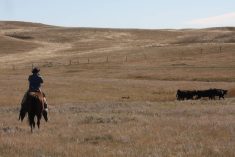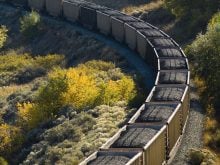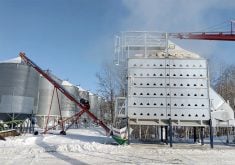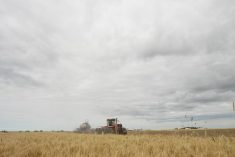Forages used in crop rotations provide multiple benefits for soil health and fertility.
Long-term studies in North Dakota, Manitoba, Saskatchewan and Alberta showed wheat yields were 50 percent higher in land previously cropped to alfalfa for three years, said Nova Scotia-based agronomist Bill Thomas.
Other crops also flourished.
“Corn crops planted following legumes require less nitrogen and insecticides and are more drought tolerant. You can typically have fewer problems with perennial weeds,” he said at the recent Canadian Forage and Grasslands Association conference held in Calgary.
Read Also

Europe holds promise for Canadian lentils
Pulse Canada is trying to help boost lentil consumption in Europe, which is already the fourth largest market.
Depending on location, alfalfa’s nitrogen contribution could range between 80 and 100 pounds per acre and linger for a couple years. Alfalfa yields drop 17 percent by the third year and even more in subsequent years so the nutrient benefits to the soil also slow.
Beyond better yields, soil organic matter improves with less compaction or erosion. More organic matter keeps the soil microbes nourished.
“Soil organic matter is the energy which fuels decomposer organisms, which in turn affect soil structure with larger, more stable soil aggregates and more water-holding capacity,” he said.
Forage crops require added fertilizer for increased production but many producers do not use enough, said Tom Jensen of the International Plant Nutrition Institute.
There are 118 elements on Earth, and plants need 16 of them to grow. These include hydrogen, oxygen, nitrogen, phosphorous, potassium, sulfur, calcium and magnesium, as well as trace minerals like boron, chloride, copper, iron, nickel, manganese, zinc and molybdenum.
Fertilizer needs to be the right kind, go in the right place in the right form and at the right rate.
Plants use inorganic salts, which bacteria decompose and allow plants to absorb through the roots. Plants cannot absorb organic fertilizer.
The timing of fertilizer placement is important.
Nitrogen on forages should go on early and could be applied as a top dressing between cuttings. Fertilizer can also be applied in the fall in drier regions of Western Canada.
Keeping the nitrogen in the soil is a challenge because these fertilizers can gas off into the atmosphere under certain conditions.
Up to 50 percent of the nitrogen could be lost as ammonia gas when delivered via broadcast urea. If the weather turns wet, gaseous loss of nitrates from wet soil is also possible.
“If the nitrogen fertilizer gets changed over to nitrate and we get wet, soggy conditions for a while, when the microbes in the soil can’t get oxygen, there is not enough air in the soil so they go after the oxygen in the nitrate nitrogen,” he said.
Nitrogen in the nitrate form is mobile in the soil. Ammonium is less mobile.
“That is because the clay particles in the soil have a negative electro-static charge. Anything that has a positive charge is attracted towards the clay and moves very slowly. Anything that has a negative ion charge is pushed away from the clay and will move with the water,” he said.
Nitrate can move up to a metre in a year from where it was applied.
There are ongoing concerns about phosphorous ending up in water causing algae blooms.
However, phosphorous is less mobile. A granule of phosphate fertilizer moves less than a centimetre in a year in most soil types.
Potassium movement is between the two.
“We want to manage our fertilizer to avoid those situations,” he said.















